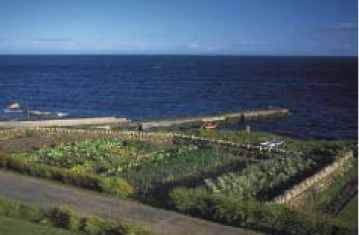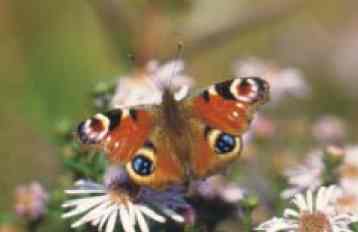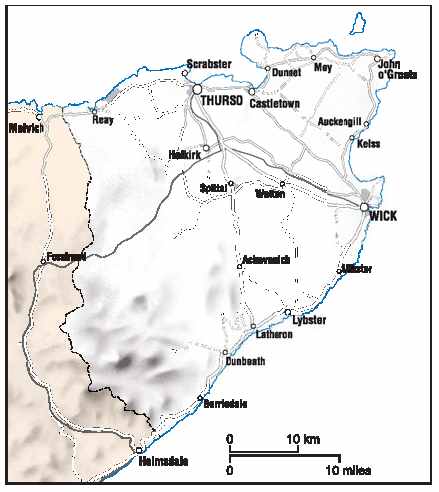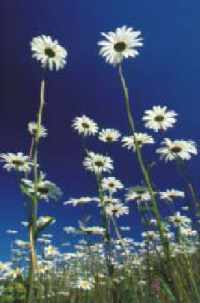|
TOWN AND VILLAGE
Introduction
In an area such as Caithness where
the countryside is so valuable for biodiversity, it is possible to
overlook the importance of the built environment. However, towns, villages
and roads provide an important biodiversity resource, both in terms of the
habitats and the species they contain.
The garden is probably the place
where most people will have first hand experience of biodiversity, and by
securing the interest of the local population in helping the wildlife on
their doorstep, many of the of the project aims may be achieved.
|
Biodiversity Objectives
-
Provide greater funding to
make parks and school grounds more attractive to wildlife.
-
Encourage the later cutting
of grass verges and hedges to encourage wild flowers and wildlife.
-
Invest in resources to deal
with litter, including old vehicles, to prevent fly tipping.
-
Provide greater resources to
recycling schemes to encourage local people to re-use and recycle
waste.
-
Encourage more people to
garden for wildlife.
|
Parks and
gardens
Habitats
and species
Caithness folk value their town
parks and urban trees, and both Wick
and Thurso have well used parks adjacent to their respective rivers.

Coastal garden, Skirza
Smaller towns and villages such as
Reay, Castletown, Halkirk, Dunbeath and Latheronwheel have woodland,
riverside and coastal walks joining the towns to the surrounding
countryside. Thurso, Wick and Halkirk have rivers with associated wildlife
habitats that extend right into the towns. Pipistrelle bats and swifts are
two locally important species that live in these types of habitats, and
non-native bushes such as contoneaster and sorbus provide a valuable
source of food for wintering birds.

Peacock butterfly
Main
issues
Fungal infections and loss of old
trees are a threat to urban trees and parklands, and new planting and
management is required on an ongoing basis.
With increasing budgetary constraints, park and public garden management
is becoming less well resourced. However, leaving some grass areas long
and uncut and hedges untrimmed will benefit biodiversity, and there may be
a need for raising awareness amongst local people as to the benefits of
such management.
Current
biodiversity projects
The Biology Department at Wick High
School is coordinating a whole school environmental awareness initiative,
involving litter collections, and planting tubs and hanging baskets.
Ormlie Pre-School and a number of
Primary Schools throughout the county have undertaken wildlife gardening
projects in their grounds.
|
Opportunities for action
-
Plant native species in town
parks and gardens, and seek funding for the establishment, long term
maintenance and development of wildlife gardens in Caithness,
particularly in schools.
-
Encourage building of
communal nest boxes for sparrows in towns and gardens as most bird
boxes are for tits and robins etc. Use recycled wood from local
businesses.
-
Encourage people to leave out
buildings, garages etc. open to allow swallows to nest in summer,
use sheets to stop droppings damaging cars.
-
Produce a wildlife gardening
publication specific to Caithness gardens, as many presently
available publications are not suitable for the Caithness climate.
-
Produce an advice pack for
businesses to seek funding and appropriate planting to improve
biodiversity on and around their premises, and encourage businesses
to work towards local and national award schemes for the most
environmentally friendly business.
-
Conduct a survey of town
trees in areas such as Wick and Thurso, and involve local people in
new planting and management through e.g. a tree warden scheme. The
survey could be use to decide policies for any new plantings.
-
Conduct a Rookery Survey over
the breeding season with a town school, possibly involving a video
camera link to a nest. Many mature trees are being cut because of
rookeries being established and the subsequent problems of
droppings.
|
|

Habitat Map
Roadside
verges
Habitats and
species
Species rich hedges and roadside
verges have also been identified as a locally important habitat in
Caithness, retaining once abundant farmland plants such as orchids, ragged
robin, meadowsweet and water avens for local communities and visitors to
admire. The verges are very important as wildlife corridors allowing
relatively safe passage for wildlife form one habitat to the next.
Tree sparrows, goldfinch and
yellowhammer are three locally important bird species that benefit from
these habitats.

Ox-eye daisies
Main issues
-
If verge vegetation is cut before
the wild flowers have time to set seeds, they will gradually be lost in
favour of rank grasses.
-
Using mowers that tear hedge
plants weakens their structure and allows disease to set in, and annual
cutting of hedges removes a source of food and shelter for wintering
birds. Many hedges could be left uncut either in alternate years or on
alternate sides each year, to allow hedge plants to flower and set seed,
and if hedges must be cut for safety reasons it should be done late in
winter / early spring.
-
The introduction and spread of
ragwort by machinery, livestock or wind is a problem in some areas of
the county. Ragwort is poisonous to horses and cattle.
Opportunities for action
- Develop a strategy for the cutting of
roadside verges that does not reduce the biodiversity of this
habitat, and implement it through verge maintenance contracts.
- Reduce the depth to which roadside ditches
are cleaned, to maintain ditch vegetation.
- Control ragwort and other invasive plants,
targeting areas worst affected.
- Undertake an education project for road
maintenance workers and contractors on the correct use of machinery
and practices to most benefit biodiversity.
- Undertake a survey of the roadside verges,
hedges, trees and ditches in Caithness.
|
|



